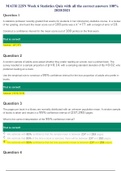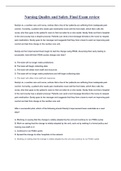Samenvatting
Summary External Relations of the European Union - Literature Summaries week 1
Summaries of the readings for External Relations of the European Union week 1: - J. Larik and R.A.Wessel (eds.), Chapter 1: The European Union as a Global Legal Actor (pp. 1-26); - J. Larik and R.A.Wessel (eds.), Chapter 4: Instruments of EU External Action (pp. 101-137); - A.Ott, The EU Commission...
[Meer zien]













